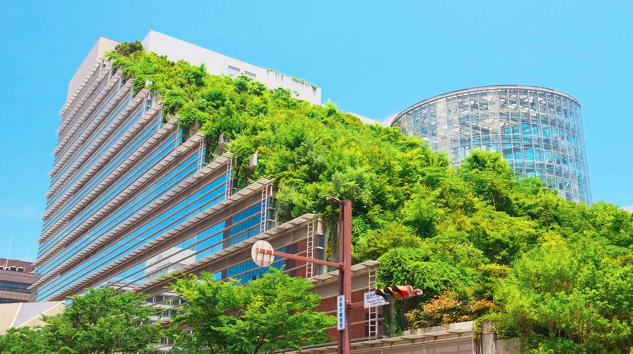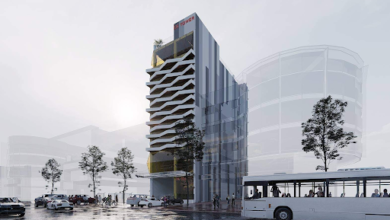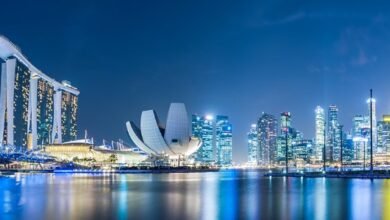Sustainable Real Estate: The Rise of Green Buildings

Sustainable real estate is no longer just a trend; it’s a movement shaping the future of the construction and real estate industries. The rise of green buildings reflects a growing awareness of the need for environmental responsibility and the benefits of energy-efficient, resource-conserving construction. In this article, we will explore the various facets of sustainable real estate and how green buildings are leading the charge toward a more eco-friendly future. As the industry evolves, even practices like Wholesale Real Estate are being influenced by this shift towards sustainability.
Introduction to Sustainable Real Estate
Sustainable real estate refers to the practice of designing, constructing, and operating buildings in a way that minimizes environmental impact. This approach encompasses a wide range of practices, from using sustainable materials to integrating renewable energy sources. The goal is to create spaces that are not only environmentally friendly but also economically viable and beneficial to the health and well-being of the occupants.
The Evolution of Green Buildings
The concept of green buildings has evolved significantly over the years. Initially, the focus was on energy efficiency, but today, green buildings incorporate a holistic approach that includes water conservation, indoor air quality, and waste reduction. This evolution reflects a broader understanding of sustainability and its importance in the built environment.
Key Principles of Green Building Design
Green building design is guided by several key principles that ensure sustainability is at the core of the construction process. These principles include energy efficiency, water conservation, use of sustainable materials, and enhancing indoor environmental quality. By adhering to these principles, architects and developers can create buildings that are not only green but also comfortable and healthy for occupants.
Read also: Cute:21ae387j7uu= Minecraft House
Energy Efficiency in Green Buildings
Energy efficiency is one of the most critical aspects of green buildings. By reducing energy consumption, buildings can lower their carbon footprint and operational costs. This is achieved through various means, such as improved insulation, high-performance windows, and energy-efficient lighting and HVAC systems.
Water Conservation Techniques
Water conservation is another vital component of green building design. Techniques such as rainwater harvesting, low-flow fixtures, and water-efficient landscaping help reduce the overall water usage of a building. These measures not only conserve a precious resource but also lower utility costs.
Sustainable Building Materials
The choice of materials plays a crucial role in the sustainability of a building. Sustainable materials are those that are sourced responsibly, have a low environmental impact, and are durable. Examples include recycled steel, bamboo, and reclaimed wood. Using such materials reduces the demand for virgin resources and minimizes waste.
Indoor Environmental Quality
Indoor environmental quality (IEQ) refers to the conditions inside a building that affect the health and comfort of its occupants. In green buildings, IEQ is enhanced through the use of non-toxic materials, proper ventilation, and access to natural light. This focus on IEQ ensures that green buildings provide a healthy living or working environment.
The Economic Benefits of Green Buildings
Green buildings offer numerous economic benefits. While the initial costs of green construction may be higher, these are often offset by lower operating costs, such as reduced energy and water bills. Additionally, green buildings tend to have higher property values and attract tenants willing to pay a premium for sustainable spaces.
Social and Health Benefits of Sustainable Real Estate
Beyond economic gains, sustainable real estate also offers significant social and health benefits. Green buildings contribute to the well-being of their occupants by providing cleaner air, natural light, and a connection to nature. These factors have been shown to improve mental health, productivity, and overall quality of life.
Government Incentives for Green Buildings
Governments around the world are recognizing the importance of green buildings and are offering incentives to encourage sustainable construction. These incentives may include tax breaks, grants, or expedited permitting processes for projects that meet certain sustainability criteria. Such policies are helping to drive the growth of sustainable real estate.
LEED Certification and Its Impact
LEED (Leadership in Energy and Environmental Design) certification is one of the most recognized standards for green buildings. Buildings that achieve LEED certification meet stringent criteria related to sustainability, energy use, and environmental impact. Achieving LEED certification can enhance a building’s marketability and demonstrate a commitment to sustainability.
Challenges in Implementing Green Building Practices
Despite the many benefits, there are challenges to implementing green building practices. These include higher upfront costs, a lack of awareness or expertise among builders, and regulatory hurdles. However, as more stakeholders recognize the value of sustainable construction, these challenges are gradually being overcome.
Read also:
Innovative Technologies in Green Buildings
The rise of green buildings has been supported by innovative technologies that make sustainable construction more feasible and effective. These technologies include smart building systems, energy management software, QR codes, and renewable energy installations like solar panels and wind turbines. By leveraging these innovations, developers can create buildings that are truly sustainable.
The Role of Architects and Developers in Sustainable Real Estate
Architects and developers play a crucial role in the rise of sustainable real estate. Their decisions regarding design, materials, and construction methods directly impact the sustainability of a building. By prioritizing green practices, they can drive the industry toward more environmentally responsible outcomes.
Case Studies of Successful Green Buildings
Examining case studies of successful green buildings provides valuable insights into the best practices and challenges of sustainable construction. These case studies showcase how different buildings have achieved sustainability goals through innovative design, technology, and collaboration.
The Future of Sustainable Real Estate
The future of sustainable real estate looks promising as more stakeholders embrace the principles of green building. Advances in technology, increased awareness, and supportive policies are likely to drive continued growth in this sector. Future developments may include even more energy-efficient buildings, sustainable urban planning, and broader adoption of green building standards.
The Global Impact of Green Buildings
Green buildings have a significant global impact. By reducing energy consumption and carbon emissions, they contribute to the fight against climate change. Furthermore, the widespread adoption of sustainable building practices can lead to healthier communities and a more resilient environment.
How to Get Started with Green Building Projects
For those interested in starting a green building project, the process begins with understanding the principles of sustainable design and the various certification options available. It’s also important to work with experienced professionals who can guide the project from concept to completion, ensuring that sustainability goals are met.
Sustainable Real Estate Investment Opportunities
Investing in sustainable real estate is becoming increasingly popular as the demand for green buildings grows. Investors are recognizing the long-term value of sustainable properties, which often outperform traditional buildings in terms of energy efficiency, tenant satisfaction, and property value. This section explores the opportunities and considerations for those looking to invest in green real estate.
The Role of Policy and Regulation in Promoting Green Buildings
Policy and regulation play a crucial role in promoting the adoption of green building practices. Governments at various levels can set standards, provide incentives, and create frameworks that encourage sustainable construction. Understanding these policies is essential for developers and investors who want to capitalize on the green building movement.
The Importance of Education and Awareness in Sustainable Real Estate
Education and awareness are key to the continued growth of sustainable real estate. By educating the public, professionals, and policymakers about the benefits of green buildings, we can drive greater adoption of sustainable practices. This section will explore the various ways to promote education and awareness, from formal training programs to community outreach initiatives.
FAQs
How do green buildings contribute to sustainability?
Green buildings contribute to sustainability by reducing energy and water consumption, minimizing waste, and using environmentally friendly materials. These practices help lower the overall environmental impact of the construction and operation of buildings.
What are some common features of green buildings?
Common features of green buildings include energy-efficient HVAC systems, low-flow water fixtures, renewable energy sources like solar panels, and the use of recycled or sustainable materials. These features are designed to reduce the environmental footprint of the building.
Are green buildings more expensive to construct?
While green buildings may have higher upfront costs due to the use of sustainable materials and advanced technologies, these costs are often offset by lower operating expenses over time. Additionally, government incentives and increased property values can make green buildings a financially viable option.
What is LEED certification?
LEED certification is a globally recognized standard for green buildings. It provides a framework for building environmentally responsible and resource-efficient structures. Buildings that meet LEED criteria are awarded certification at different levels (Certified, Silver, Gold, or Platinum) based on their sustainability achievements.
How can investors benefit from sustainable real estate?
Investors can benefit from sustainable real estate through higher property values, lower operating costs, and increased tenant demand for eco-friendly spaces. As sustainability becomes a priority for more businesses and individuals, the market for green buildings is expected to grow.
What role do architects play in green building projects?
Architects are central to green building projects as they design spaces that are both functional and sustainable. Their expertise in materials, energy systems, and environmental impact is crucial in creating buildings that meet sustainability goals.
Conclusion
The rise of green buildings in sustainable real estate is more than just a trend; it represents a fundamental shift in how we approach construction and urban development. By prioritizing energy efficiency, water conservation, and the use of sustainable materials, green buildings are leading the way toward a more sustainable future. As awareness and demand for sustainable real estate continue to grow, we can expect to see even more innovative and impactful developments in this space.






